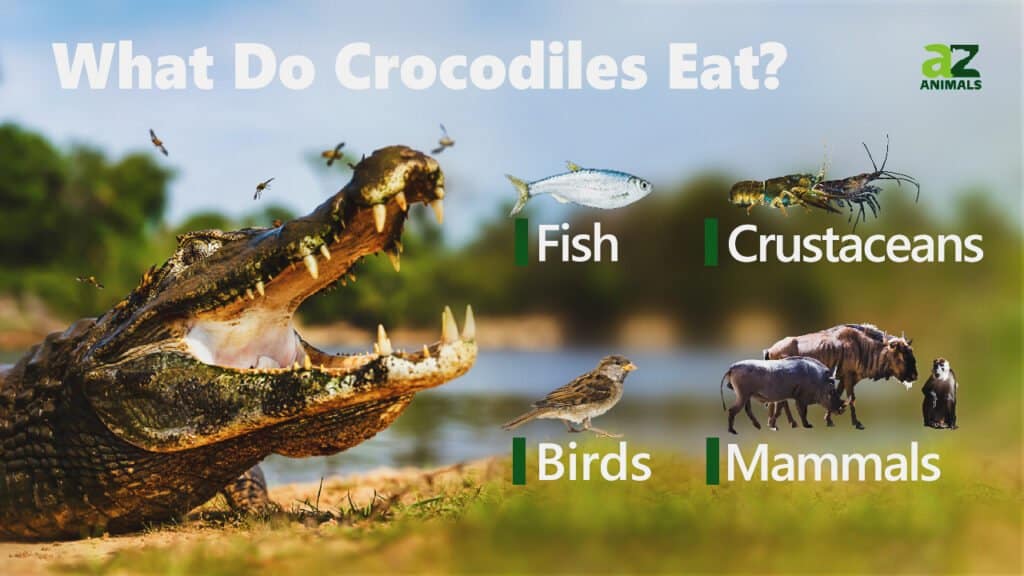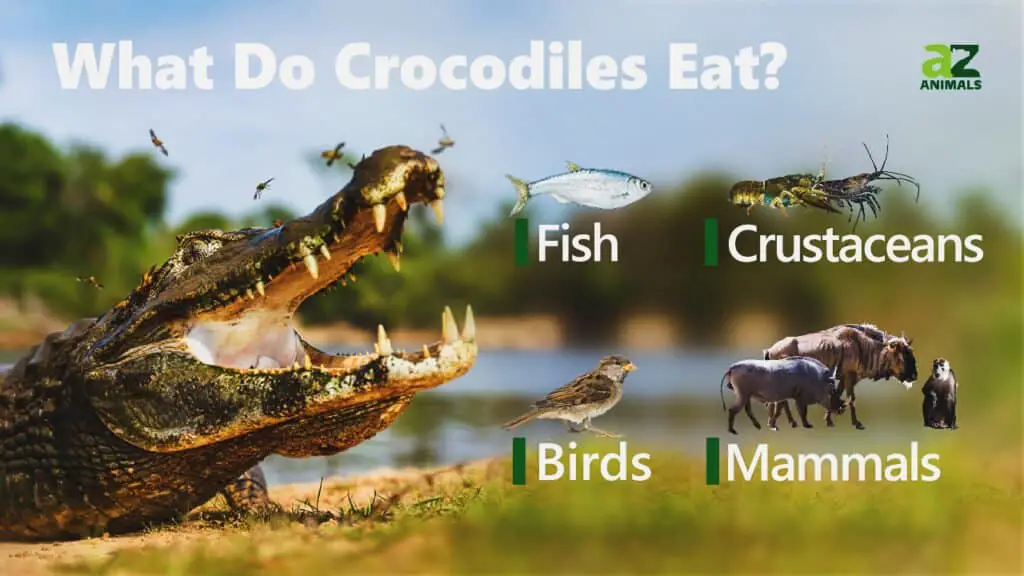Alligators are one of the most feared predators in the animal kingdom. They are known for their powerful jaws and sharp teeth that can tear through flesh with ease. But have you ever wondered what these reptiles eat in the wild? In this article, we will explore the top 5 prey animals of alligators and how they catch them.
From fish to birds, alligators have a wide range of prey animals that they hunt. Some of these animals are easy targets while others require a bit more skill and strategy. Join us as we dive into the world of alligator hunting and learn more about these fascinating creatures.
Alligators are apex predators that feed on a variety of prey animals. The top 5 prey animals of alligators include fish, turtles, birds, mammals, and other reptiles. Fish is the most common prey for alligators, followed by turtles. Alligators also feed on birds such as herons, egrets and waterfowl. Mammals like raccoons, deer, and wild pigs are also on their menu. Alligators are known to eat other reptiles like snakes and small alligators as well.

Top 5 Prey Animals of Alligators: What They Eat in the Wild
Alligators are carnivorous reptiles that are found in the southeastern part of the United States. They are known for their powerful jaws and sharp teeth that allow them to hunt and eat a variety of prey animals in the wild. In this article, we will take a closer look at the top 5 prey animals of alligators and what they eat in the wild.
1. Fish
Alligators are opportunistic feeders and will eat any fish that they can catch in their habitat. They are known to eat a variety of fish species, including bass, catfish, and sunfish. Alligators hunt for fish by lying in wait near the water’s edge and then lunging at their prey when it swims by. They are also known to swim after fish and catch them in their powerful jaws.
One benefit of alligators eating fish is that it helps to control the fish population in their habitat. Alligators are also an important part of the food chain, as they provide food for other predators in their ecosystem.
2. Birds
Alligators are also known to eat a variety of birds, including herons, egrets, and ducks. They hunt for birds by lying in wait near their roosting sites and then lunging at them when they take flight. Alligators are also known to swim after birds and catch them in mid-air.
One benefit of alligators eating birds is that it helps to control the bird population in their habitat. Alligators are also an important part of the food chain, as they provide food for other predators in their ecosystem.
3. Turtles
Alligators are known to eat a variety of turtle species, including painted turtles, sliders, and cooters. They hunt for turtles by lying in wait near the water’s edge and then lunging at them when they come up for air. Alligators are also known to swim after turtles and catch them in their powerful jaws.
One benefit of alligators eating turtles is that it helps to control the turtle population in their habitat. Alligators are also an important part of the food chain, as they provide food for other predators in their ecosystem.
4. Mammals
Alligators are opportunistic feeders and will eat a variety of mammals, including raccoons, muskrats, and otters. They hunt for mammals by lying in wait near their habitats and then lunging at them when they come near the water’s edge. Alligators are also known to swim after mammals and catch them in their powerful jaws.
One benefit of alligators eating mammals is that it helps to control the mammal population in their habitat. Alligators are also an important part of the food chain, as they provide food for other predators in their ecosystem.
5. Snakes
Alligators are known to eat a variety of snake species, including water moccasins and rattlesnakes. They hunt for snakes by lying in wait near the water’s edge and then lunging at them when they come near the water. Alligators are also known to swim after snakes and catch them in their powerful jaws.
One benefit of alligators eating snakes is that it helps to control the snake population in their habitat. Alligators are also an important part of the food chain, as they provide food for other predators in their ecosystem.
In conclusion, alligators are powerful predators that eat a variety of prey animals in the wild. By eating these animals, they help to control their populations and provide food for other predators in their ecosystem. If you happen to encounter an alligator in the wild, it is best to keep your distance and let it go about its business.
Frequently Asked Questions
Learn about the top 5 prey animals of alligators and their eating habits in the wild.
What are the top 5 prey animals of alligators?
The top 5 prey animals of alligators are fish, turtles, birds, snakes, and mammals. Alligators are opportunistic predators, which means they will eat any animal that comes within their reach. The size and age of the alligator also determine the type of prey they can capture and consume.
Alligators are known for their powerful jaws and sharp teeth, which they use to crush and tear apart their prey. They are also excellent swimmers and can ambush their prey from the water or land.
What types of fish do alligators eat?
Alligators eat a variety of fish, including catfish, sunfish, and bass. They typically hunt fish that are smaller than themselves, but have been known to take larger fish as well. Alligators are skilled hunters and can catch fish with their teeth or by using their powerful tail to create a disturbance in the water and stun their prey.
They also use their keen sense of smell to detect fish in the water, and can even detect vibrations in the water to locate their prey.
Do alligators eat birds?
Yes, alligators are known to eat birds, particularly wading birds such as egrets and herons. They will also eat ducks, geese, and other waterfowl that are swimming in the water. Alligators will often wait for birds to come close to the water’s edge before lunging at them with their powerful jaws.
Alligators have been known to eat birds whole, swallowing them head first. They may also tear apart larger birds with their teeth and consume them in smaller pieces.
What types of mammals do alligators eat?
Alligators have been known to eat a variety of mammals, including raccoons, deer, and even wild boars. They will also eat smaller mammals such as rodents and rabbits. Alligators are opportunistic predators and will eat any animal that they can catch and overpower.
Alligators are particularly skilled at hunting in the water, where they can use their powerful jaws and sharp teeth to capture their prey. They are also adept at hunting on land and will often ambush mammals that are coming to the water’s edge to drink.
How do alligators hunt turtles?
Alligators are known for their ability to catch and eat turtles. They will often wait for turtles to come to the water’s edge to bask in the sun before lunging at them with their powerful jaws. Alligators have powerful muscles in their jaws that allow them to crush the hard shells of turtles.
They are also skilled at flipping turtles over onto their backs, which makes it easier for them to access the soft flesh underneath the shell. Alligators are patient hunters and will often wait for turtles to tire themselves out before making their move.
In conclusion, alligators are apex predators that can be found in various habitats across the world. They are known for their powerful jaws and impressive hunting skills, especially when it comes to preying on other animals. In this article, we have explored the top 5 prey animals of alligators, including fish, turtles, birds, mammals, and even other alligators.
It’s fascinating to learn about the hunting habits of these ancient reptiles and how they have evolved to become such efficient predators. However, it’s important to remember that alligators play a vital role in their ecosystems and should be respected and protected. Their presence in wetlands and marshes helps maintain a healthy balance of species and contributes to the overall biodiversity of our planet.
In summary, understanding what alligators eat in the wild can offer us valuable insights into their behavior and ecology. By learning about their prey preferences, we can also gain a deeper appreciation for the natural world and the complex relationships between different species. So next time you come across an alligator, take a moment to observe and admire these incredible creatures in their natural habitat.


